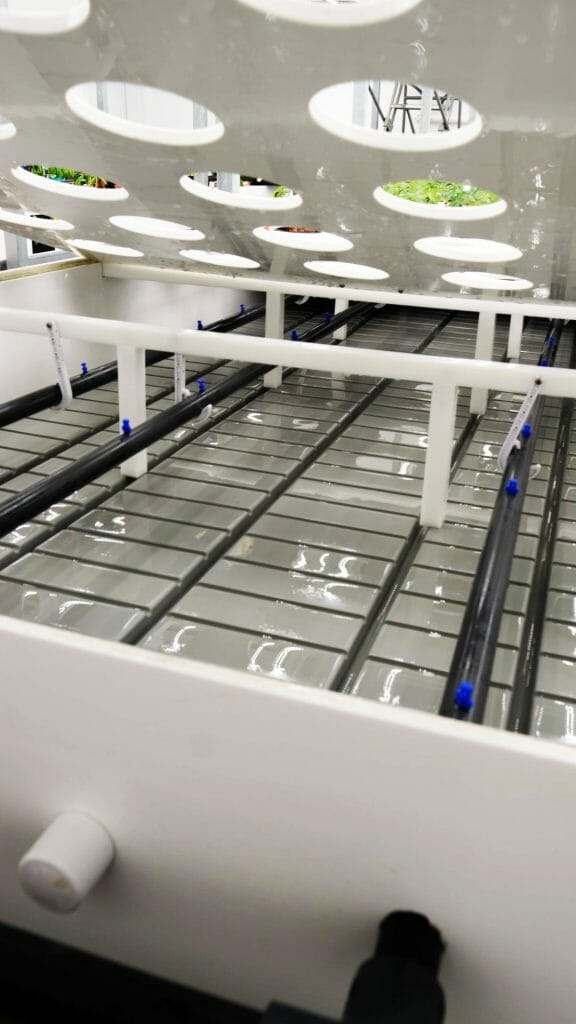In the conversation of aeroponic vs hydroponic, which cultivation system is best? Both provide more efficient, eco-friendly options than traditional soil-based farming. Hydroponics is an environmentally-friendly alternative to traditional soil growing, but aeroponics requires fewer natural resources and nutrients to cultivate the same or higher amount of crops. Thus, a reduced carbon footprint. Rockwool, on the other hand, made from rock mineral manufactured into wool, is not at all environmentally friendly because its recycling options are limited, inefficient and require additional resources.
Aeroponics vs Hydroponics Grow Systems
Hydroponics Systems Come in Different Designs with Similar Risk
In hydroponics, plants are submerged in water and are typically anchored in some sort of growing medium. Options include Nutrient Film Technique (NFT), Deep Water Culture (DWC), Ebb & Flow, and drip with Rockwool. Plants will absorb nutrients via drip irrigation or submersion, and oxygen is typically required to be mechanically added to avoid risk of suffocation. Because each individual rockwool cube or dutch bucket is in fact it’s own growth chamber, each one needs to be monitored and maintained individually.
While each of these hydroponic grow styles can be effective, they all have their drawbacks, mainly in terms of clogged emitters, failed pumps, lack of oxygen, or inconsistent nutrient delivery. While there may be some buffer time from an outage, constant power supply is required by all these systems to maintain a healthy crop.
Setting up a hydroponic system is complex as it requires a series of pumps, reservoirs, chillers, timers, and reservoirs. Back up power generation is highly recommended. While aeroponics may need a different timer that can handle shorter and more frequent cycles, the equipment is essentially identical, as is the need for redundancies.
The only major difference here is that aeroponics could suffer a crop loss earlier than would be the case if there was a loss of power or failed equipment. However, modern, professional facilities are set up with monitoring equipment and high level SOP’s that will allow for a smooth operation until power is restored or equipment can be changed out.
Aeroponics: An Advanced and Highly Efficient Form of Hydroponics
Looking at aeroponics vs hydroponics systems, aeroponics is the superior choice: Aeroponics conserves vital resources and provides an efficient use of growing space.
With an aeroponic system, the plant roots are sprayed regularly with a nutrient-filled mist and never immersed in water. Plants do not require a pump or air stone for aeration because the roots are completely exposed to the air. Most aeroponic setups are enclosed indoors and require significantly less room than hydroponic systems. Maintenance and operating costs for aeroponics generally are minimal, and this method is ideal for growing cannabis and smaller fruits and vegetables.
In a hydroponic system, the roots are submerged in deep water to absorb the nutrients needed for healthy growth. A complete setup includes water trays, air pumps, air stones, tubes, pipes, and additional hoses. Required space may vary, and startup costs are usually higher because of the added equipment needed to build a hydroponic system.
Aeroponic growing, however, allows plants to be stacked closely together, does not require a growing medium, and offers easy mobility. Aeroponic systems are known for being highly efficient because they use less water and nutrients than hydroponic systems. They are also known for producing faster growth and higher yields than traditional growing methods
Because there is no grow media with aeroponics, plants do not expel energy searching for oxygen and other nutrients. A custom-made Nova Aeroponics Grow Box system will produce healthier, more robust plants.



